Company car advice
Parkers guide to company cars: news and advice to help you choose your next business car whether you’re a fleet driver or a user chooser.
Keep up with the latest news below, plus we help you choose which particular model is best below.
To work out the company car tax on any current model, use our company car tax calculator.
Latest articles
-
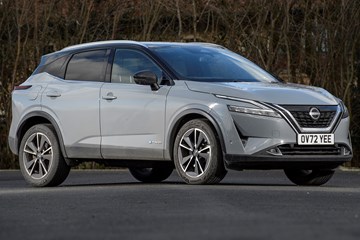 What is BIK tax? Company car tax, benefit in kind explainedBIK stands for Benefit-in-Kind and refers to any non-monetary benefit you get from employment at a company. In our world it’s almost always used in reference to company car tax,...
What is BIK tax? Company car tax, benefit in kind explainedBIK stands for Benefit-in-Kind and refers to any non-monetary benefit you get from employment at a company. In our world it’s almost always used in reference to company car tax,... -
 P11D value explainedIf you’re driving a company car, understanding its P11D value is crucial. This figure, used by HMRC to calculate your company car tax, reflects the car’s price and any extras...
P11D value explainedIf you’re driving a company car, understanding its P11D value is crucial. This figure, used by HMRC to calculate your company car tax, reflects the car’s price and any extras... -
-
 AFRs: current advisory fuel rates from 1 December 2024The Government has announced the latest Advisory Fuel Rates (AFRs), which take effect from 1 December 2024 and are in place until 28 February. The rates have come down even...
AFRs: current advisory fuel rates from 1 December 2024The Government has announced the latest Advisory Fuel Rates (AFRs), which take effect from 1 December 2024 and are in place until 28 February. The rates have come down even... -
 £200 and six points for using your mobile phone while drivingDrivers caught using their handheld mobile phone while in control of their vehicle face tough fines, more points and a potential ban from driving. Transport Secretary Chris Grayling announced the new...
£200 and six points for using your mobile phone while drivingDrivers caught using their handheld mobile phone while in control of their vehicle face tough fines, more points and a potential ban from driving. Transport Secretary Chris Grayling announced the new... -
 Taking your company car abroad? Make sure you have the right documentsA company car may be yours to take abroad on holiday, but you must remember to source and carry the necessary documents before taking the vehicle out of the country. This...
Taking your company car abroad? Make sure you have the right documentsA company car may be yours to take abroad on holiday, but you must remember to source and carry the necessary documents before taking the vehicle out of the country. This... -
-
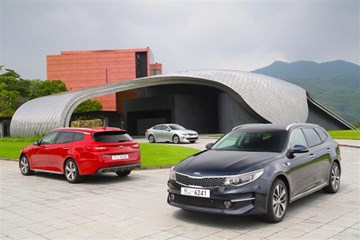 Optima prime: How this Kia could shape up as a company carKia expanded its company car driver-friendly Optima range in 2016 with two plug-in hybrid models, attempting to resonate with fleet managers and the drivers who’d run them. You can choose between the saloon...
Optima prime: How this Kia could shape up as a company carKia expanded its company car driver-friendly Optima range in 2016 with two plug-in hybrid models, attempting to resonate with fleet managers and the drivers who’d run them. You can choose between the saloon... -
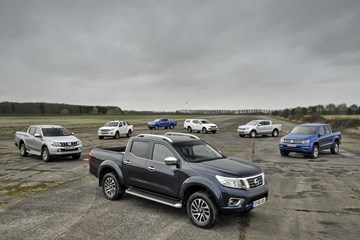 Does a pickup make sense as a company car?Pickups may not be the traditional choice when you’re looking for a new company car, but there are advantages – especially the tax savings on offer. In this article, we look...
Does a pickup make sense as a company car?Pickups may not be the traditional choice when you’re looking for a new company car, but there are advantages – especially the tax savings on offer. In this article, we look... -
-
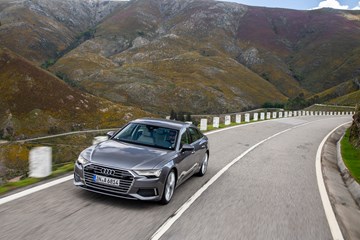 Parkers Video Reviews: Company car roundupContemplating your next company car? We’ve rounded up the best video reviews from the archives that could meet your monthly budget as a fleet driver or user-chooser. Volvo XC40 review –...
Parkers Video Reviews: Company car roundupContemplating your next company car? We’ve rounded up the best video reviews from the archives that could meet your monthly budget as a fleet driver or user-chooser. Volvo XC40 review –... -
 Mercedes-Benz C-Class 2018 first drive: full BIK rates, P11D details and specsThe Mercedes-Benz C-Class is a hugely important company car. It’s a top 10-selling car in the UK, and in 2017, 415,000 were sold globally. So Mercedes-Benz is making...
Mercedes-Benz C-Class 2018 first drive: full BIK rates, P11D details and specsThe Mercedes-Benz C-Class is a hugely important company car. It’s a top 10-selling car in the UK, and in 2017, 415,000 were sold globally. So Mercedes-Benz is making... -
 Connected company cars: Jaguar's smarter E-PaceThe Jaguar E-Pace has been revised for 2018, and alongside new engines and adaptive suspension there’s a clue that affordable science fiction is, finally, coming true for the British marque...
Connected company cars: Jaguar's smarter E-PaceThe Jaguar E-Pace has been revised for 2018, and alongside new engines and adaptive suspension there’s a clue that affordable science fiction is, finally, coming true for the British marque... -
-
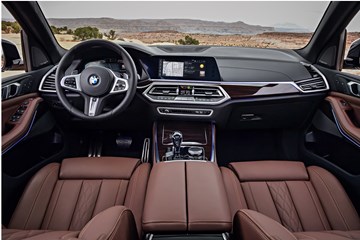 Connected company cars: BMW's mobile Office (365)Once there was a time when we thought computers would transform how we worked and give greater leisure time; in reality, the 21st century for many workers has become even...
Connected company cars: BMW's mobile Office (365)Once there was a time when we thought computers would transform how we worked and give greater leisure time; in reality, the 21st century for many workers has become even... -
 Great British BIK Off: small SUVs and crossoversThey’re on-trend and everywhere – the top 10 cars sold in the UK may still be dominated by hatchbacks (SMMT figures for 2018 so far are below), but due to...
Great British BIK Off: small SUVs and crossoversThey’re on-trend and everywhere – the top 10 cars sold in the UK may still be dominated by hatchbacks (SMMT figures for 2018 so far are below), but due to... -
-
Great British BIK Off: cars costing under £100 per monthChoosing your next company car is an exciting, but daunting prospect – and if you’re still looking at last year’s spreadsheets, some of those tempting diesels or ultra-low emissions vehicles...
-
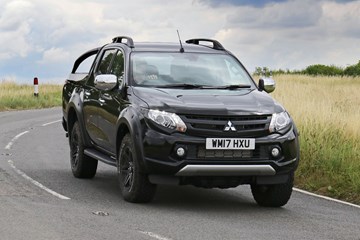 Best 4x4s for fleetsIf you’re based in a rural location and need a company vehicle that’s capable enough to stray off the tarmac every now and then, what are the best...
Best 4x4s for fleetsIf you’re based in a rural location and need a company vehicle that’s capable enough to stray off the tarmac every now and then, what are the best... -
 Company cars worth waiting forLike any technology, cars are undergoing a constant cycle of improvement and upgrades. Efficiency, fashion, safety and convenience alike are evolving in response to customer feedback and legisilation, and of...
Company cars worth waiting forLike any technology, cars are undergoing a constant cycle of improvement and upgrades. Efficiency, fashion, safety and convenience alike are evolving in response to customer feedback and legisilation, and of... -
-
 The best new company carsPicking the right company car requires a lot of thought. If you’re spending hours on end behind the wheel, it needs to be comfortable, refined and well-equipped. Most importantly, though, it...
The best new company carsPicking the right company car requires a lot of thought. If you’re spending hours on end behind the wheel, it needs to be comfortable, refined and well-equipped. Most importantly, though, it... -
 The cash vs company car debateRising up the career ladder and opening the door to the company car scheme isn’t just exciting, it also offers big savings in terms of maintenance, repair bills and fuel...
The cash vs company car debateRising up the career ladder and opening the door to the company car scheme isn’t just exciting, it also offers big savings in terms of maintenance, repair bills and fuel... -
-
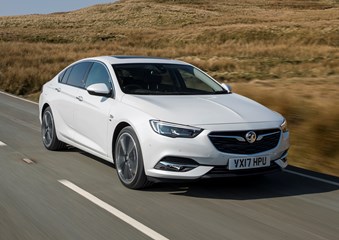 New 2017 Vauxhall Insignia to offer lower benefit-in-kindVauxhall knows which side its bread is buttered: it’s aiming the new-for-2017 Insignia squarely at the company car driver market, with CO2 emissions as low as 105 g/km and fuel...
New 2017 Vauxhall Insignia to offer lower benefit-in-kindVauxhall knows which side its bread is buttered: it’s aiming the new-for-2017 Insignia squarely at the company car driver market, with CO2 emissions as low as 105 g/km and fuel... -
Commuter says yes: 5 cars to beat the daily grindCommutes take many different forms, from the stereotypical motorway slog to an inner-city jam-fest, and picking the right car for the job can seem baffling. Choose the right wheels and you...
-
 New Kia Rio boasts choice of efficient engines and low BIKThe new Kia Rio supermini launched recently and is likely to appeal to fleet drivers looking for something compact, well equipped and cheap to run. Low BIK across the range; just...
New Kia Rio boasts choice of efficient engines and low BIKThe new Kia Rio supermini launched recently and is likely to appeal to fleet drivers looking for something compact, well equipped and cheap to run. Low BIK across the range; just... -
Most popular articles
-
 What is BIK tax? Company car tax, benefit in kind explainedBIK stands for Benefit-in-Kind and refers to any non-monetary benefit you get from employment at a company. In our world it’s almost always used in reference to company car tax,...
What is BIK tax? Company car tax, benefit in kind explainedBIK stands for Benefit-in-Kind and refers to any non-monetary benefit you get from employment at a company. In our world it’s almost always used in reference to company car tax,... -
 P11D value explainedIf you’re driving a company car, understanding its P11D value is crucial. This figure, used by HMRC to calculate your company car tax, reflects the car’s price and any extras...
P11D value explainedIf you’re driving a company car, understanding its P11D value is crucial. This figure, used by HMRC to calculate your company car tax, reflects the car’s price and any extras... -
-
 Top long-range diesel saloonsPlenty of cars offer stratospherically high fuel economy figures but that’ll only get you so far if it’s fitted with a fuel tank from a lawn-mower. If you want to tick...
Top long-range diesel saloonsPlenty of cars offer stratospherically high fuel economy figures but that’ll only get you so far if it’s fitted with a fuel tank from a lawn-mower. If you want to tick... -
 Top low-tax convertiblesConvertibles can be pretty hard to come by on user chooser lists. That’s mainly because they traditionally come with higher emissions, limited practicality and expensive price tags. Yes it is true that...
Top low-tax convertiblesConvertibles can be pretty hard to come by on user chooser lists. That’s mainly because they traditionally come with higher emissions, limited practicality and expensive price tags. Yes it is true that... -
 Cash vs Company CarCompany cars have been seen as a perk for many years now. But recently, the debate has intensified with more and more people increasingly asking – is it really a perk? Or...
Cash vs Company CarCompany cars have been seen as a perk for many years now. But recently, the debate has intensified with more and more people increasingly asking – is it really a perk? Or... -
-
 Taking your company car abroad? Make sure you have the right documentsA company car may be yours to take abroad on holiday, but you must remember to source and carry the necessary documents before taking the vehicle out of the country. This...
Taking your company car abroad? Make sure you have the right documentsA company car may be yours to take abroad on holiday, but you must remember to source and carry the necessary documents before taking the vehicle out of the country. This... -
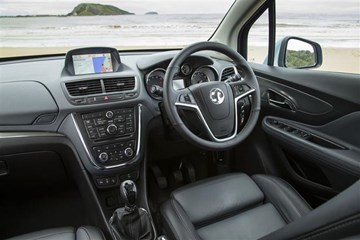 Twin test: Nissan Qashqai vs Vauxhall MokkaAs far as all-rounders go, a crossover that combines the styling and higher seating position of an SUV with the size and driveability of a hatchback is hard to beat. They...
Twin test: Nissan Qashqai vs Vauxhall MokkaAs far as all-rounders go, a crossover that combines the styling and higher seating position of an SUV with the size and driveability of a hatchback is hard to beat. They... -
-
 Long-range cruise missiles: 1,000-mile diesel estatesThe days of cars travelling 1,500 miles between fill-ups are over. Nowadays car companies have to balance the size of the fuel tank off against a car’s overall weight, which...
Long-range cruise missiles: 1,000-mile diesel estatesThe days of cars travelling 1,500 miles between fill-ups are over. Nowadays car companies have to balance the size of the fuel tank off against a car’s overall weight, which... -
 Diesel estate cars that cost less than £75 in taxA lot can change in your life over the next three or four years so picking a company car which is versatile enough to suit the demands of everyday life is very important. Estate...
Diesel estate cars that cost less than £75 in taxA lot can change in your life over the next three or four years so picking a company car which is versatile enough to suit the demands of everyday life is very important. Estate... -
 Battle of the large hatchbacks: Ford Mondeo vs Skoda SuperbLarge hatchbacks have always proved popular with company car buyers, their spacious cabins and refined on-road manners making them the ideal companion for clocking up major motorway miles. Ford and Skoda...
Battle of the large hatchbacks: Ford Mondeo vs Skoda SuperbLarge hatchbacks have always proved popular with company car buyers, their spacious cabins and refined on-road manners making them the ideal companion for clocking up major motorway miles. Ford and Skoda... -
-
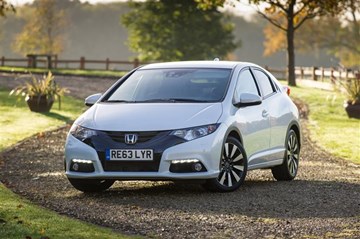 Honda Civic 1.6 i-DTEC 2014 MY road testHonda has responded to dealer and customer feedback regarding the driving characteristics of the Civic by making a series of subtle but effective modifications to improve the popular hatchback’s dynamics. Parkers...
Honda Civic 1.6 i-DTEC 2014 MY road testHonda has responded to dealer and customer feedback regarding the driving characteristics of the Civic by making a series of subtle but effective modifications to improve the popular hatchback’s dynamics. Parkers... -
 AFRs: current advisory fuel rates from 1 December 2024The Government has announced the latest Advisory Fuel Rates (AFRs), which take effect from 1 December 2024 and are in place until 28 February. The rates have come down even...
AFRs: current advisory fuel rates from 1 December 2024The Government has announced the latest Advisory Fuel Rates (AFRs), which take effect from 1 December 2024 and are in place until 28 February. The rates have come down even... -
-
First drive: Isuzu Rodeo DenverWe've been driving the double-cab Isuzu Rodeo with a tweaked 3.0-litre diesel engine to find out if the latest model is OK... Corral. Sorry. Performance from the 3.0-litre diesel engine with 161bhp means, er...
-
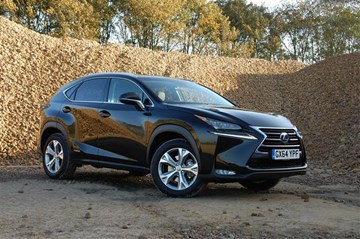 Top tax busting 4x4sBig tax bills and tight carbon dioxide limits used to mean off-road vehicles were out of reach for most company car choosers. Now though, thanks to efficient diesel engines promising lower...
Top tax busting 4x4sBig tax bills and tight carbon dioxide limits used to mean off-road vehicles were out of reach for most company car choosers. Now though, thanks to efficient diesel engines promising lower... -
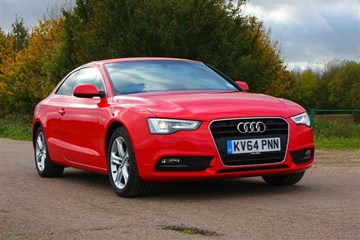 Top 5 diesel coupe company carsIf you value performance and a sleek design over practicality when picking your next company car, a coupe could be just what you’re looking for. The good news is that...
Top 5 diesel coupe company carsIf you value performance and a sleek design over practicality when picking your next company car, a coupe could be just what you’re looking for. The good news is that... -
-
 Compact executive shoot-out: 3 Series vs C-ClassYou’re enjoying the trappings of a successful career: you’ve had the salary increase, the private healthcare package and an office of your own – now the only thing left to...
Compact executive shoot-out: 3 Series vs C-ClassYou’re enjoying the trappings of a successful career: you’ve had the salary increase, the private healthcare package and an office of your own – now the only thing left to... -
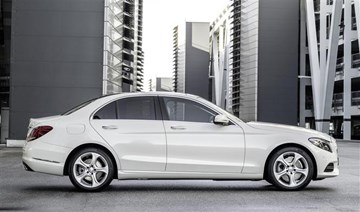 Top 5 long-range saloonsOne of the biggest concerns for the motorway focused company car driver is how many miles the thing will do to a tank of fuel. While it’s always helpful to have...
Top 5 long-range saloonsOne of the biggest concerns for the motorway focused company car driver is how many miles the thing will do to a tank of fuel. While it’s always helpful to have... -
-
 Does a pickup make sense as a company car?Pickups may not be the traditional choice when you’re looking for a new company car, but there are advantages – especially the tax savings on offer. In this article, we look...
Does a pickup make sense as a company car?Pickups may not be the traditional choice when you’re looking for a new company car, but there are advantages – especially the tax savings on offer. In this article, we look... -
 Mercedes-Benz C-Class 2018 first drive: full BIK rates, P11D details and specsThe Mercedes-Benz C-Class is a hugely important company car. It’s a top 10-selling car in the UK, and in 2017, 415,000 were sold globally. So Mercedes-Benz is making...
Mercedes-Benz C-Class 2018 first drive: full BIK rates, P11D details and specsThe Mercedes-Benz C-Class is a hugely important company car. It’s a top 10-selling car in the UK, and in 2017, 415,000 were sold globally. So Mercedes-Benz is making... -
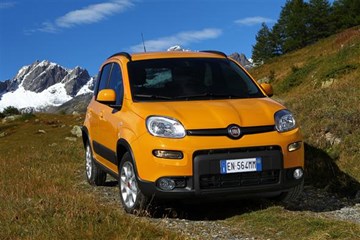 Fiat Panda Trekking 0.9 litre Twinair road testThe Fiat Panda Trekking TwinAir is the latest incarnation of the Panda. With its rugged design it looks like a 4x4 but this version is actually a front-wheel drive version of...
Fiat Panda Trekking 0.9 litre Twinair road testThe Fiat Panda Trekking TwinAir is the latest incarnation of the Panda. With its rugged design it looks like a 4x4 but this version is actually a front-wheel drive version of... -
Need more help choosing a company car?
Choosing a company car can be a tricky task: here we help unravel all the complications over company car tax, benefit-in-kind (BIK) tax and guide you through the best choices.
We help everyone from business drivers selecting a car off a choice list to smaller corporate user-choosers from smaller companies.
Company car advice and explainers
Don't forget to check out these sections if you need more help:







